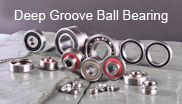Fluid Bearings in High Speed Milling Spindles
A mechanical bearing is simply termed as a device to permit constrained relative motion between two parts, typically rotation or linear movement. Bearings used in spindles have undergone various incremental improvements these days. The hybrid ball bearings using ceramic balls are more popular as compared to the steel bearings. But nowadays, besides the traditional bearings, manufacturers are opting for other options in high speed milling spindles. They are opting for fundamental change in spindle bearings used primarily in milling. One such option is to replace mechanical ball bearings with hydrostatic bearings or fluid bearings, the bearings that are free of contact between moving surfaces.
Fluid bearing cannot be classified as an absolutely new idea as the practice of using water as the bearing medium is relatively primitive. The only new aspect is the heightened demand to apply this technology in milling spindles. A fluid bearing today is defined as a type of non contact bearing where there is no contact between the moving surfaces. Spindle motors of today are now available to deliver more power, and cutting tools available these days can put the increased power to use. The only constraint here us the bearing. A mechanical use bearing can be put to use withstanding a long service life. On the other hand, Hybrid ball bearings used in the milling spindles appear to represent the practical limit of how much power and speed a mechanical bearing can be put to use. It has been proved that fluid bearings having higher load capacity and can overcome the defined performance limit.
The advantage of fluid bearing is that it can be used in case of high speed and high power machining. The fluid also acts instrumental in delivering smooth motion and ensures low run out and even damp vibrations. These types of bearings are mainly used in aerospace industry in hard steel mold and die milling.
The advantages of fluid bearings are many. In a fluid bearing, there is a complete isolation of the spinning component from the stationary one by the fluid. Even air can create an effective non contact bearing. As when compared to other bearing it is noticed that while a magnetic bearing requires an expensive spindle design, an air bearing lacks stiffness. Using fluid as the bearing medium produces a spindle that can be both cost-effective and efficient for heavy cutting. Moreover, fluid bearing can bear a heavier load. Spindle¡¯s low run out is also because of the lack of contact. Fluid bearing does not require much maintenance and hence does not provide a chance to the mechanical contact to wear out moving parts, thus bearing stands to deliver considerably longer life.
However, there are certain drawbacks of this kind of mechanical bearing, as well. Using the fluid bearing can cause inefficiency related to liquid viscosity which results in liquid friction. To overcome this resistance along with countering losses of viscosity in the bearing, the spindle motor has to work harder. Though hydrostatic bearings running at low speeds can use a viscous liquid like oil, higher rpm requires an easier-flowing liquid, but using water is not a simple substitution. Oil, which is non reactive is a good option but the same case is not with the water. To use water as the bearing medium, the spindle maker must take into consideration various additional steps during manufacturing like coating internal components, using deionized water and sealing the motor.



